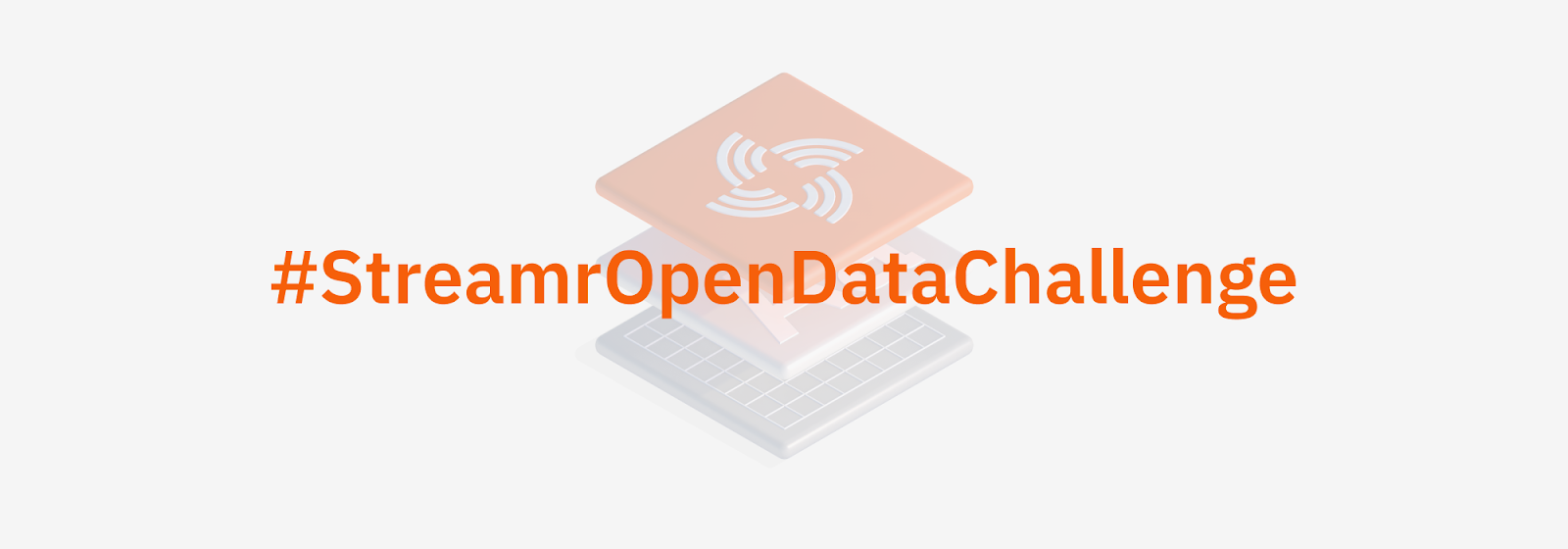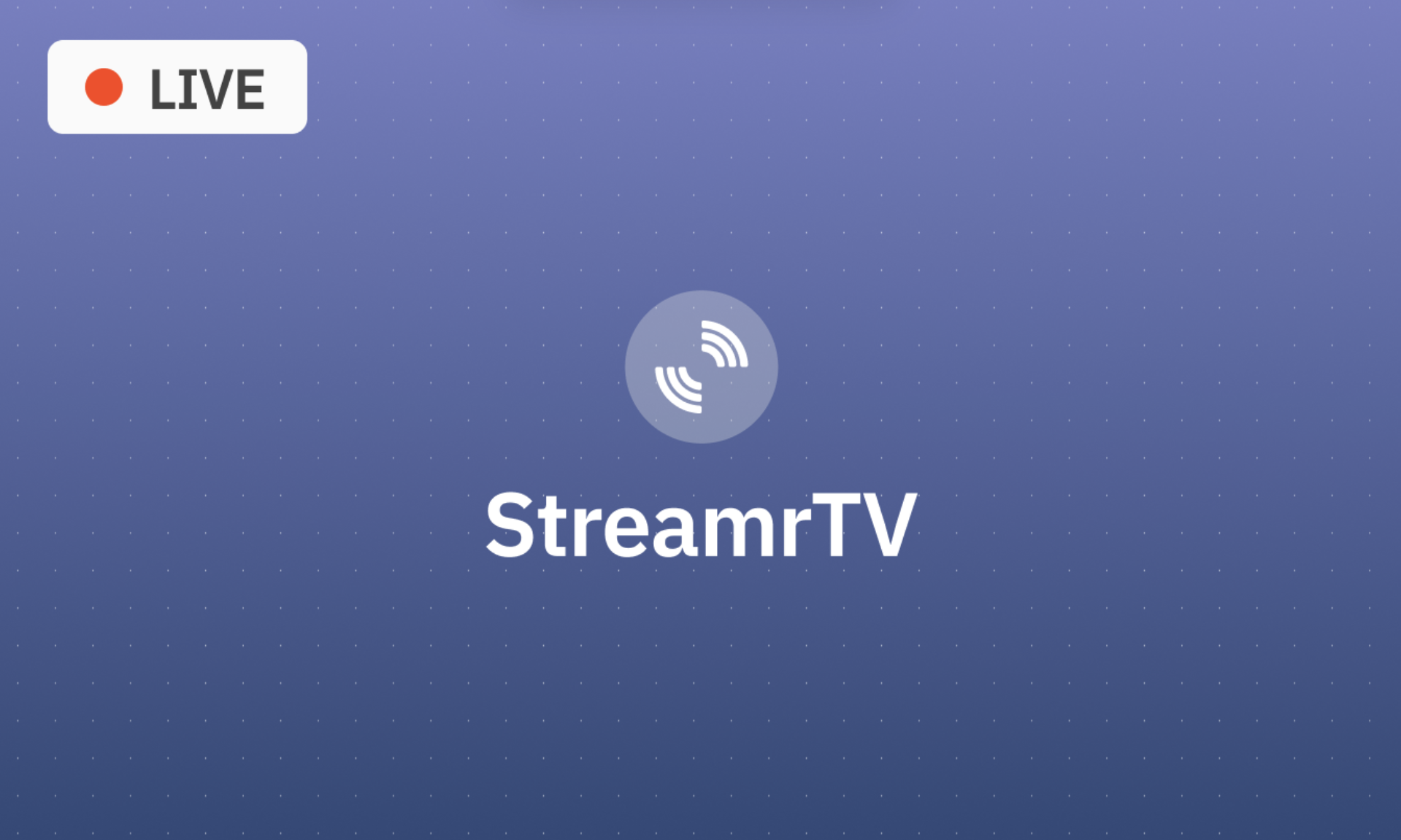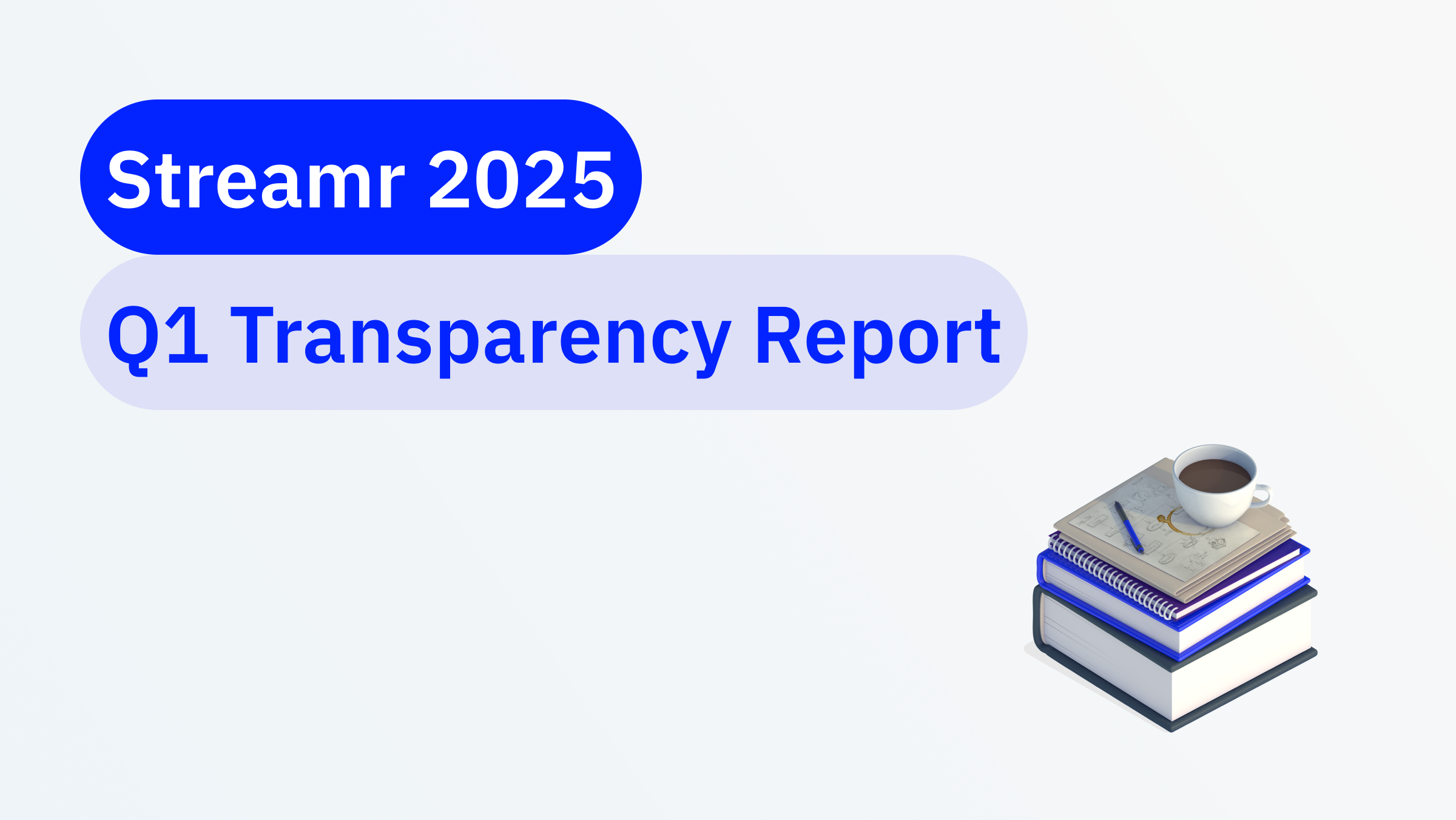With the launch of the Developer Ambassador Program, we’re excited to kick off the Open Data Challenge with a prize pool of $1,000. Developers are invited to explore intriguing open data sources and stream them to The Hub in real-time using the decentralized Streamr Network. From network data, through IoT data, citizen science, the range of live data possibilities is vast.
Table of Contents
- How to participate
- Stream ideas
- 1. Citizen Science Data
- 2. Internet of Things (IoT) Data
- 3. Decentralized Finance (DeFi) Data
- 4. Earth Observation Data
- 5. Urban and Infrastructure Data
- 6. Social Media and Web Data
- 7. Environmental and Climate Data
- 8. E-commerce and Market Data
- 9. Health and Fitness Data
- 10. Mobility and Transportation Data
How to participate
All you have to do is add your stream to The Hub, write it up in a short blog post or Twitter thread giving some details about what was achieved, and share it with us on Twitter using the hashtag #StreamrOpenDataChallenge.
Two winners will be selected and will receive $500 dollars in DATA and an sNFT. One winner is chosen by the Streamr team, and one by community voting on Snapshot—so make sure to make some noise on Twitter about what makes your stream special! Winners will be encouraged to follow up with a technical blog that goes into some detail and instruction on usage.
You have until the end of July 2023 to make your submission. At which point, soon after, there will be a community vote and the team will announce their pick. To be eligible to vote on Snapshot, you’ll need at least 100 DATA tokens in your wallet (not an exchange) on Polygon or Ethereum at the time the vote starts (TBA).
We’re looking for data streams that offer tangible benefits and are interesting and well presented. We’d also like to hear how you might maintain the stream to prevent data decay.
Get started in the dev docs!
Stream ideas
To help spark your creativity, here are ten potential data streams you might consider for this contest:
1. Citizen Science Data
Leverage global citizen science initiatives by developing data streams that provide real-time updates on phenomena like climate change observations, bird watching records, meteor sightings, or Unidentified Aerial Phenomena (UAP). These decentralized contributions can create global, up-to-the-minute resources for research.
Where to find the data: Platforms like Zooniverse or Scistarter host a multitude of citizen science projects, many of which have open data policies. Similarly, resources like the GBIF (Global Biodiversity Information Facility) can provide data for nature-related projects. For UAP data, consider MUFON (Mutual UFO Network), a US-based organisation that investigates cases of reported UFO sightings.
2. Internet of Things (IoT) Data
With the ubiquity of IoT devices, there’s a treasure trove of real-time data awaiting exploration. Data streams from wearables or smart home devices can contribute to a multitude of sectors, including health monitoring and energy management.
Where to find the data: Public IoT datasets can be found on platforms such as Thingful, a search engine for IoT data, or the Smart City Data Project, which provides data from various sensors in cities around the world.
3. Decentralized Finance (DeFi) Data
The DeFi space is rich with data. Real-time streams on token transactions, smart contract interactions, or liquidity pool metrics can offer significant insights to investors and analysts in the rapidly evolving decentralized finance landscape.
Where to find the data: The Ethereum blockchain, with its smart contract functionality, is the backbone of many DeFi projects. Resources like Etherscan or Infura provide access to this data. Additionally, APIs from DeFi platforms such as Uniswap or Aave can be used to access real-time data.
4. Earth Observation Data
Satellites and aerial sensors offer a constant flow of real-time data about our planet. Developing data streams for weather patterns, vegetation cover, or marine conditions can be instrumental for meteorologists, environmental scientists, and climate change researchers.
Where to find the data: NASA’s EarthData platform or the European Space Agency’s Sentinel satellites provide a wealth of open earth observation data.
5. Urban and Infrastructure Data
Urban landscapes and their infrastructure systems generate a wealth of real-time data. Data streams about traffic conditions, public transport usage, or energy consumption can contribute to more sustainable and efficient city management.
Where to find the data: Open data portals from cities around the world, like NYC Open Data or London Datastore, provide access to a plethora of urban data. These can range from traffic conditions to public transportation usage. For global traffic data, Uber Movement provides a free, global traffic speed data set linked to OpenStreetMap.
Social media platforms and websites are a hub for real-time sentiment analysis and trending topics. Developers can create data streams from these sources to help businesses, marketers, or public relations professionals monitor public sentiment and stay ahead of the curve.
Where to find the data: Many social media platforms like Twitter or Reddit provide APIs for accessing public posts and discussions. However, keep in mind usage may be subject to certain rules and limitations.
7. Environmental and Climate Data
Real-time data on air quality, microclimate conditions, and renewable energy production can be vital for environmental initiatives and policy making. Developers can tap into distributed weather stations and other sources to create these data streams.
Where to find the data: The World Air Quality Index project provides access to real-time air quality information from around the world. Similarly, platforms like NOAA provide a wealth of environmental and climate data.
8. E-commerce and Market Data
Online marketplaces and financial markets are dynamic, necessitating real-time data. Data streams that track price changes, product availability, or buying trends can provide businesses with the insights they need to stay competitive.
Where to find the data: While access to private e-commerce data would require partnerships or permissions, platforms like Google Trends or SimilarWeb can provide insights into market trends and web traffic.
9. Health and Fitness Data
Real-time health data from electronic health records (EHRs) or fitness trackers can drive personalised medicine and proactive health strategies. As privacy concerns are paramount, decentralization adds an additional layer of security and control to these data streams.
Where to find the data: Accessing health data can be challenging due to privacy issues. However, some entities like the U.S. Department of Health and Human Services provide anonymized datasets. Additionally, some fitness apps like Fitbit have APIs for developers, but usage is typically subject to user consent.
10. Mobility and Transportation Data
With autonomous vehicles and smart transport systems on the rise, there’s a growing need for real-time transportation data. Data streams about traffic flow, route efficiency, or transport system status can revolutionize transportation management and planning.
Where to find the data: Many cities provide open data on their public transportation systems. For example, Transport for London has an extensive API. For broader transportation data, resources like the Bureau of Transportation Statistics in the U.S. can be helpful, and of course, see projects like Dimo.
We look forward to seeing your creative applications of these and other data streams on the Streamr Hub. If you have any questions, let us know on Discord.
Think you might make a great developer ambassador? Register your interest here.
Good streaming, and may the best data win!










